The Poco X3 NFC is gaming-oriented mid-range device from the Xiaomi-owned brand. As the name suggests, it comes with a NFC (near field communication) module that allows contactless payments and similar applications, but the X3 NFC has a lot more to offer, especially when considering its aggressive price point.
It’s powered by Qualcomm’s Snapdragon 732G chipset and features a 6.67-inch IPS LCD display with a 120 Hz refresh rate as well as a massive 5160 mAh battery with fast-charging capabilities.
In the camera department, a 64 MP primary camera is coupled with a 13 MP ultra-wide. A 2 MP macro cam and a depth sensor for bokeh simulation complete the camera array. Let’s see how the combo performs in our DXOMARK Camera tests.
Key camera specifications:
- Primary: Sony IMX 682 64 MP 1/1.73″ sensor, 1.6μm, 26 mm-equivalent f/1.89-aperture lens
- Ultra-wide: 13 MP sensor, 16 mm-equivalent f/2.2-aperture lens, 119° field of view
- Macro: 2 MP sensor, 1.75μm, f/2.4-aperture lens
- Depth: 2 MP sensor, 1.75μm, f/2.4-aperture lens
- LED flash
- 2160p/30 fps, 1080p/30 fps
About DXOMARK Camera tests: For scoring and analysis in our smartphone camera reviews, DXOMARK engineers capture and evaluate over 3000 test images and more than 2.5 hours of video both in controlled lab environments and in natural indoor and outdoor scenes, using the camera’s default settings. This article is designed to highlight the most important results of our testing. For more information about the DXOMARK Camera test protocol, click here. More details on how we score smartphone cameras are available here.
Test summary
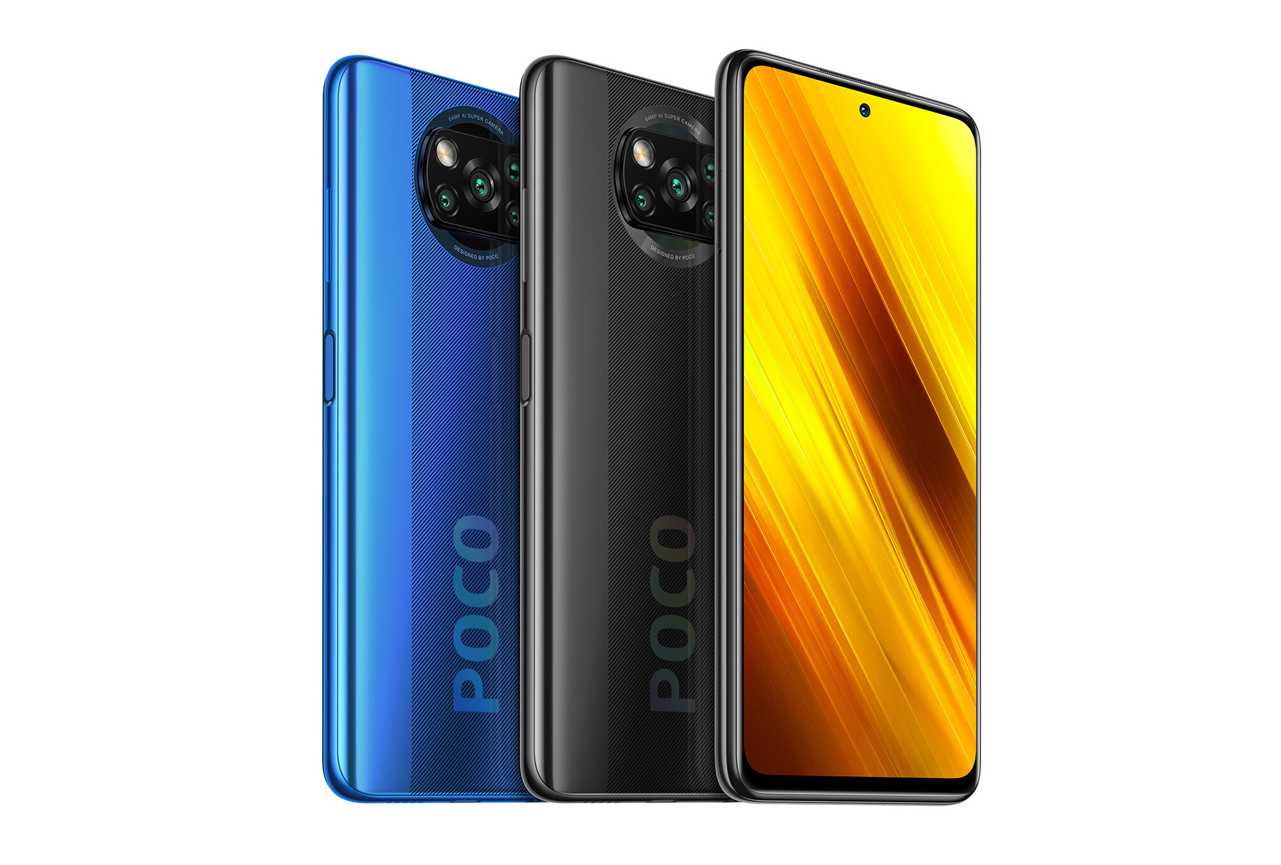
POCO X3 NFC


Pros
- Nice skin tones
- Good detail on portraits
- Fast autofocus in bright outdoor light and indoors
- Good detail on faces in night portraits
- Good subject exposure in auto-flash portraits
- Effective video stabilization when holding camera still
- Accurate white balance in outdoor videos
Cons
- Limited dynamic range in outdoor scenes
- Focus failures in low light
- Color casts in all light conditions
- Image noise in all conditions
- Underexposes in ultra-wide high-contrast scenes and in low-light videos
- Exposure and autofocus instabilities in videos
With an overall score of 103, the Poco X3 NFC is located towards the bottom of the DXOMARK Camera ranking. However, it’s also one of the most affordable devices we have tested, and other phones on a similar performance level, such as the iPhone SE (2020) (103), the Xiaomi Mi 10T 5G (98), and the Oppo Find X2 Neo (105) will all require a more substantial investment than the Poco.
The X3 NFC’s camera is capable of capturing good still images in conditions that are not too challenging, and its Photo score of 107 is on a similar level as higher-priced models. In the Zoom department, the Poco scores a fairly low 45, which is predominantly due to the lack of a dedicated tele-lens and the resulting low-quality zoom images. Video shooters will appreciate the fairly effective stabilization in static shooting and accurate outdoor white balance, which earned the device a Video score of 98.
While the Poco X3 NFC cannot compete with most flagship phones and its camera leaves some room for improvement, overall it looks like a good option for smartphone photographers on a budget.
Below you can find a detailed analysis and image samples for all Photo, Zoom, and Video sub-attributes, as well as comparisons with two of the Poco X3 NFC’s competitors, the Samsung Galaxy S20 FE and the Xiaomi Mi 10T Pro.
Photo
The Poco X3 NFC achieves a Photo score of 107. In this section, we take a closer look at each sub-attribute and compare image quality against competitors.

Exposure and Contrast
POCO X3 NFC
72
111
In these tests we analyze target exposure, contrast, and dynamic range, including repeatability across a series of images. Tests are undertaken in a wide range of light conditions, including backlit scenes and low light down to 1 lux. The score is derived from a number of objective measurements in the lab and perceptual analysis of real-life images.
These samples show the Poco X3 NFC’s exposure performance in daylight compared to the competition.

Color
POCO X3 NFC
93
107
In these tests we analyze color rendering, skin tones, white balance, and color shading, including repeatability across a series of images. The score is derived from a number of objective measurements in the lab and perceptual analysis of real-life images.
These samples show the Poco X3 NFC’s color performance in low light compared to the competition.

Autofocus
POCO X3 NFC
85
109
In these tests we analyze autofocus accuracy and shooting time, including repeatability, in the lab. We test focus failures, depth of field, and tracking of moving subjects using perceptual analysis of real-life images.
This graph shows the Poco X3 NFC’s autofocus performance in the lab at a light level of 20 lux and a brightness range of 4 EV.

Texture
POCO X3 NFC
89
111
In these tests we analyze texture on faces and objects, including objects in motion, in a range of light conditions, using several lab test setups and perceptual analysis of real-life images.
These samples show the Poco X3 NFC’s texture performance in outdoor light compared to the competition.
This graph shows the Poco X3 NFC’s texture measurements in the lab.

Noise
POCO X3 NFC
64
102
In these tests we analyze noise on faces and objects, including objects in motion, in a range of light conditions, using several lab test setups and perceptual analysis of real-life images.
These samples show the Poco X3 NFC’s noise performance in low light compared to the competition.

Bokeh
POCO X3 NFC
50
80
For these tests we switch to the camera’s bokeh or portrait mode and analyze depth estimation, bokeh shape, blur gradient, and repeatability, as well as all other general image quality attributes mentioned above. The score is derived from perceptual analysis of real-life images.
These samples show the Poco X3 NFC’s bokeh simulation in daylight compared to the competition.

Night
POCO X3 NFC
35
82
In these tests we shoot a selection of images in pitch-black darkness as well as with city lights in the background providing some illumination. We shoot sample images with the camera at default settings in both flash-auto and flash-off modes. We analyze all image quality attributes but we pay particular attention to exposure, autofocus, and color. We do not test night modes that have to be activated manually.
These samples show the Poco X3 NFC’s night performance in flash-off mode compared to the competition.

Artifacts
POCO X3 NFC
62
77
In these tests we check images for optical artifacts such as vignetting, flare, lens softness in the corner, distortion, and chromatic aberrations, as well as for processing artifacts such as ghosting and fusion errors, hue shift, and ringing.
This sample shows fusion artifacts in a low-light image.

Preview
POCO X3 NFC
49
80
In these tests we analyze the image quality of the preview image and the differences between preview images and captured images, particularly in terms of exposure, dynamic range, and bokeh effect. We also check the smoothness of the field-of-view changes on the preview image when zooming with both buttons or when using the pinch-zoom gesture.
These samples show the Poco X3 NFC’s preview performance in an indoor setting.
Zoom
The Poco X3 NFC achieves a Zoom score of 45. The Zoom score includes the tele and wide sub-scores. In this section, we take a closer look at how these sub-scores were achieved and compare zoom image quality against the competitors.

Wide
POCO X3 NFC
30
58
In these tests we analyze the performance of the ultra-wide camera at several focal lengths from 12 to 20 mm. We look at all image quality attributes, but we pay particular attention to such artifacts as chromatic aberrations, lens softness, and distortion.
These samples show the performance of the Poco X3 NFC’s ultra-wide camera in daylight conditions compared to the competition.

Tele
POCO X3 NFC
54
140
In these tests we analyze all image quality attributes at focal lengths from approximately 40 to 300 mm, paying particular attention to texture and detail. The score is derived from a number of objective measurements in the lab and perceptual analysis of real-life images.
These samples show the Poco X3 NFC’s and its competitors’ tele performance in the lab at 1000 lux and using a medium zoom setting.
Video
In our Video tests we analyze the same image quality attributes as for still images, such as exposure, color, texture or noise, but we also include such temporal aspects as speed, and smoothness and stability of exposure, white balance and autofocus transitions.
NOTE: The sample video clips in this section are best viewed at 4K resolution.
The Poco X3 NFC achieves a Video score of 98. A device’s overall Video score is derived from its performance and results across a range of attributes in the same way as the Photo score. In this section, we take a closer look at these sub-scores and compare video image quality against competitors.

Exposure and Contrast
POCO X3 NFC
68
118
These video stills show the Poco X3 NFC’s video exposure in low light compared to the competition.

Color
POCO X3 NFC
82
107
These video stills show the Poco X3 NFC’s video color in low light compared to the competition.

Autofocus
POCO X3 NFC
75
109
These sample clips show the Poco X3 NFC’s video autofocus performance in low light.

Texture
POCO X3 NFC
77
99
This graph shows the Poco X3 NFC’s video texture measurements in the lab.

Noise
POCO X3 NFC
93
105
These sample clips show the Poco X3 NFC’s video noise performance in low light.

Artifacts
POCO X3 NFC
78
85
For video artifacts, we check for the same kinds of artifacts mentioned in the Photo section, along with such video-specific artifacts as frame rate variation in different light conditions, judder effect, and moving artifacts (artifacts such as aliasing, color quantization, and flare can often be more intrusive when moving than in a still image).
This video still shows a hue shift close to clipped areas in the brighter background of the video.

Stabilization
POCO X3 NFC
88
103
In these tests we analyze residual motion when handholding the camera during recording, as well as when walking and running with the camera. We also look for stabilization artifacts such as jello effect, sharpness differences between frames, and frame shift (abrupt changes of framing).
This sample clip shows the Poco X3 NFC’s video stabilization in outdoor conditions.


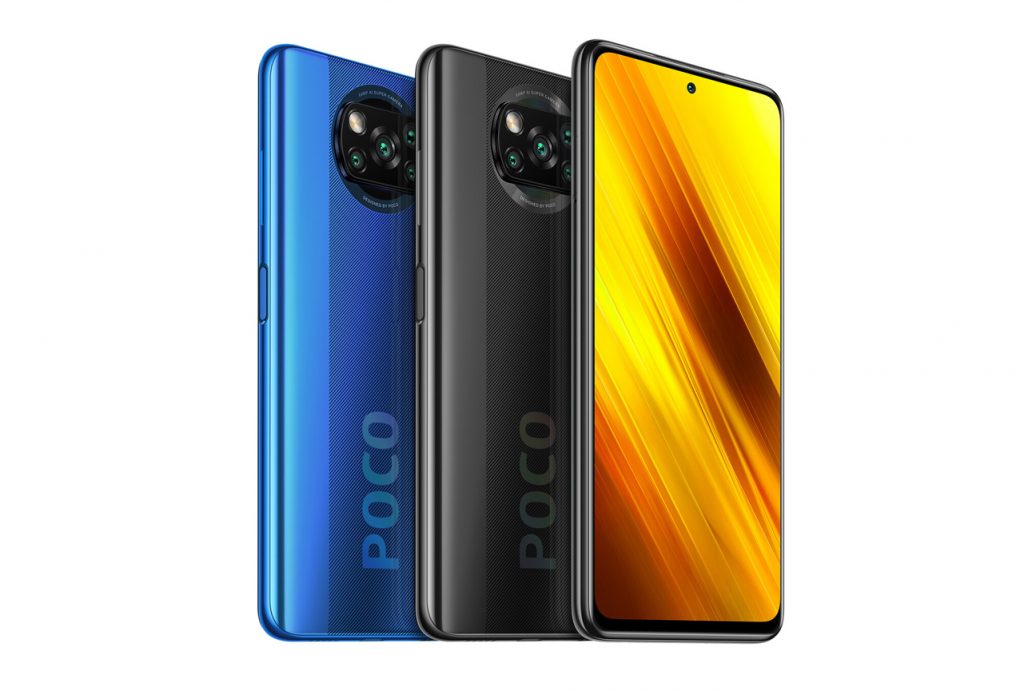






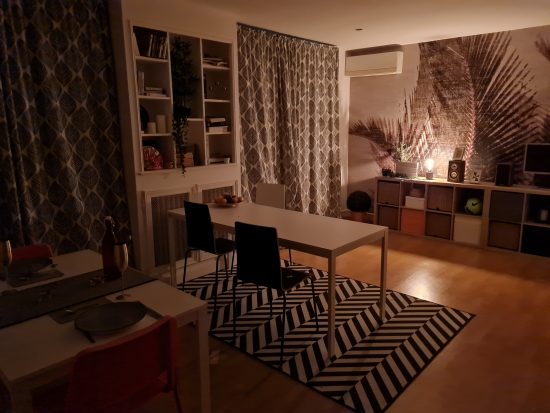

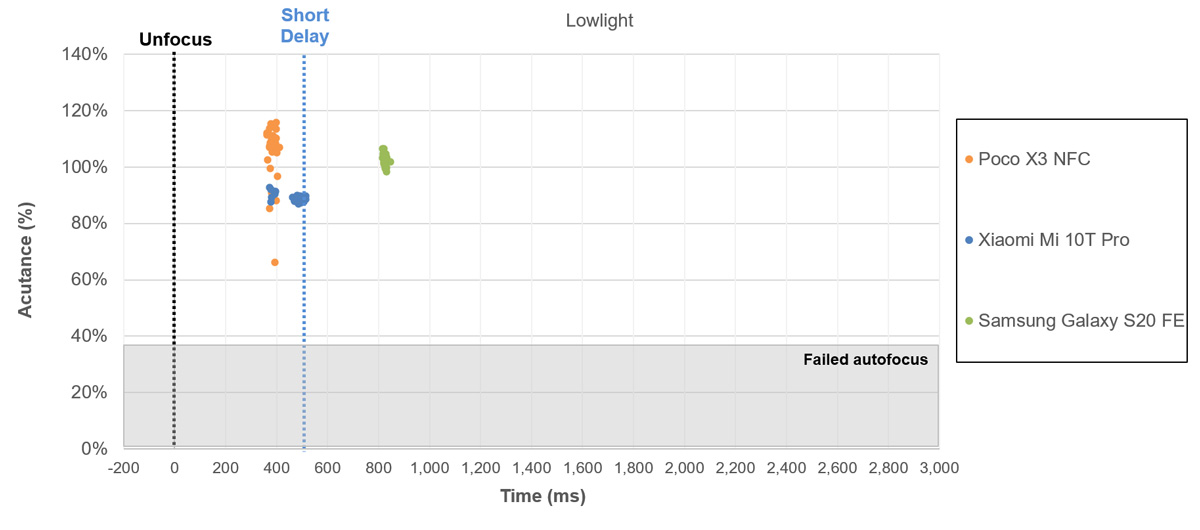



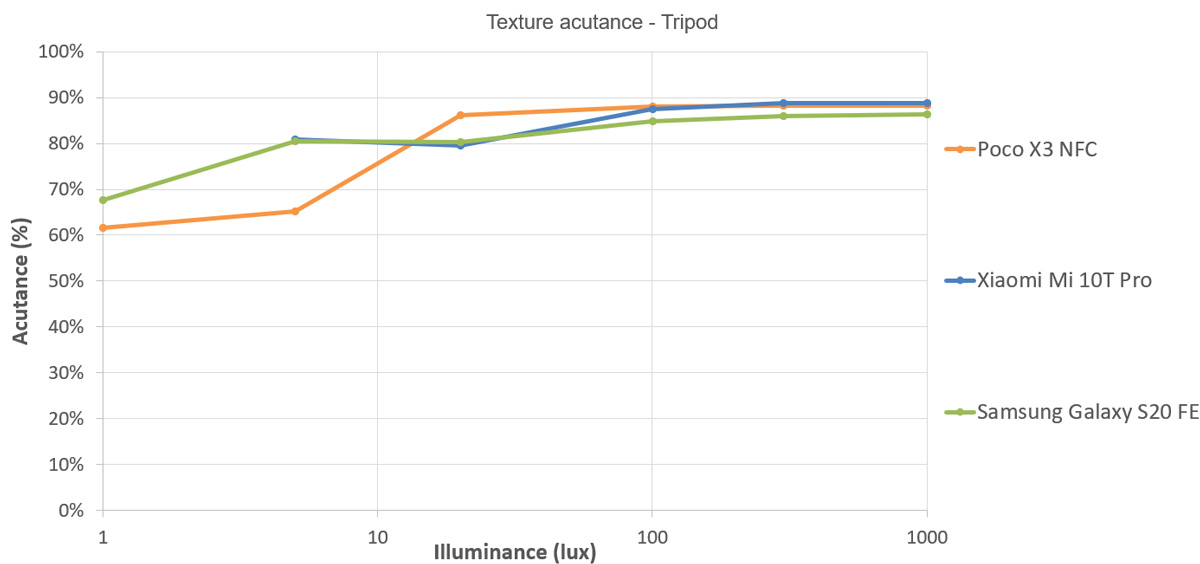

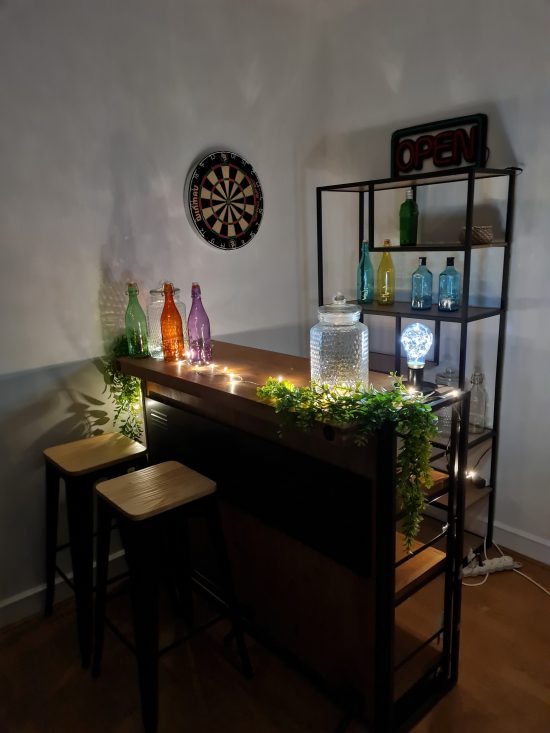







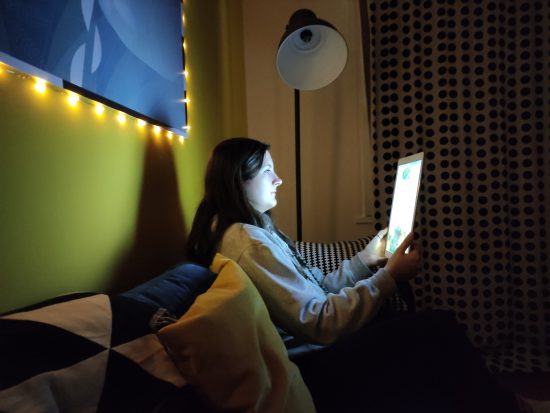
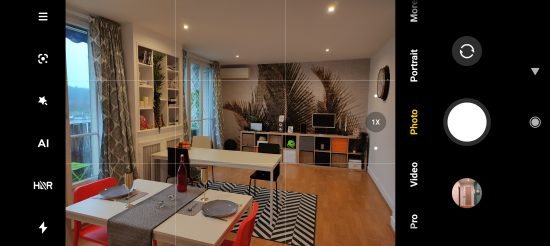
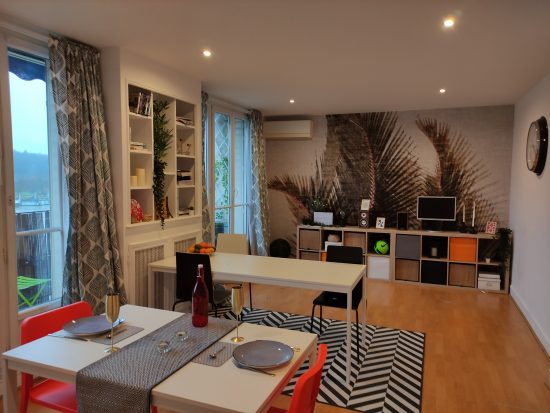












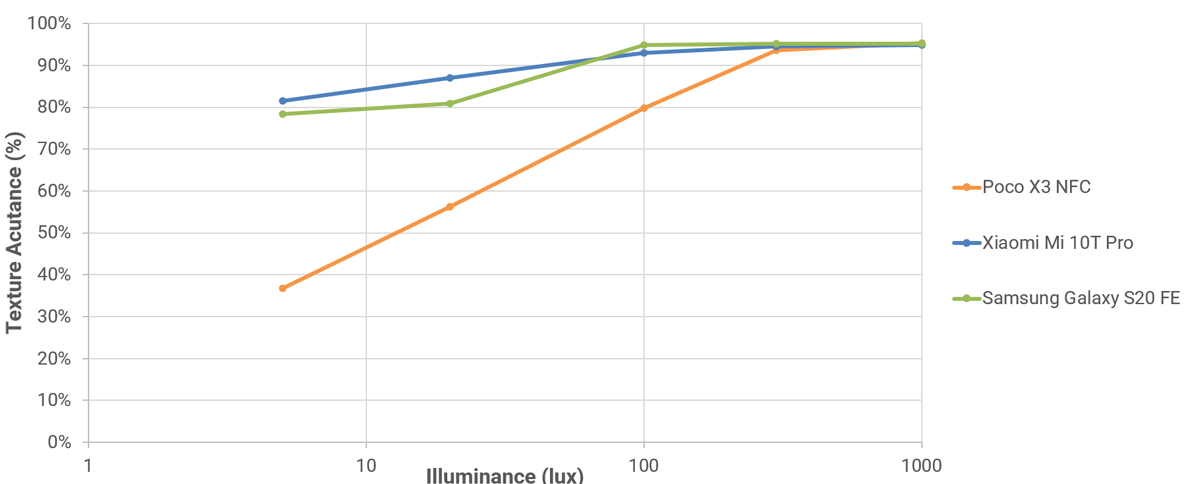



DXOMARK encourages its readers to share comments on the articles. To read or post comments, Disqus cookies are required. Change your Cookies Preferences and read more about our Comment Policy.